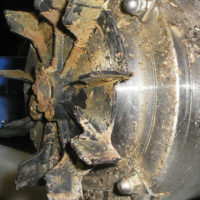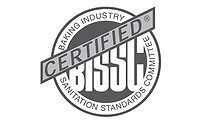Back in the dark ages, before the existence of U.S. Public Health Service/U.S. Food and Drug Administration (FDA) Food Code, most of us who were part of the regulatory community had to rely on the 1962 or the 1976 Food Service Sanitation Manual for enforcement guidelines. The version depended on the progressive nature of one’s state; however, there were few substantive differences between the two.
Three decades ago, we heard of Hazard Analysis Critical Control Points (HACCP), but it had little impact on what we did or on the performance of our clients. I cannot recall any food establishment that embraced it. Overall, we had precious little guidance into the nuances of safe food practices other than temperature and cross-contamination control. We learned by observing, and if we were really lucky, we found an operator who knew the principles of safe food preparation (generally a veteran of the military or a classically trained chef) and routinely used their example.
Yes, the regulations were primarily geared to floors, walls and ceilings. It was felt that a clean establishment would be a safe one. We know now that this is only partially correct and our emphasis has shifted to food handling practices and personal hygiene. However, there is still reason to emphasize the environment around us. In this age of Listeria monocytogenes and E.coli O157:H7 contamination, equipment and its design, construction, placement and cleaning, remain an integral part of the food processor’s and chef’s obligation to reduce risk, as well as an important part of the inspector’s repertoire.
Armed With Standards
In the past, most of us would not think of going on an inspection or audit without a battery of National Sanitation Foundation (now NSF International) standards in our briefcase to provide code interpretation, design parameters and a starting point for a plan review. I can distinctly remember my dog-eared copies of pre-ANSI, NSF Standards 2, 3, 4, 6, 7, 8, 12 and 18 that were my constant companions. Collectively they gave me information on food, warewashing and cooking equipment; soft ice cream machines; refrigerators and freezers; and ice makers and beverage dispensers. They provided clear and concise guidance and interpretation of such open-ended concepts as “adequate,” “cleanable” and “of sanitary design. Unfortu-nately, today’s regulator no longer relies on these or other industry-promulgated standards to provide an objective basis of their findings—but they should.
The standards find their usefulness by establishing minimum requirements: definitions, material specifications, design parameters, construction details, and when applicable, performance criteria. Annexes to the standards detail methodologies of evaluation and construction, guidelines for the equipment installation, and a listing of normative references, if more detail is needed. Finally, each standard lists the committee members responsible for its content and approval. Needless to say, many of these names are familiar to those of us in government and industry, and they are an excellent source of further practical information. Not bad for a publication of about 25 pages.
On food-related equipment, a listing mark indicates that the equipment was built to a consensus standard, and that its conformity to that standard has been verified by a third party. In other words, the mark tells us that the manufacturer of the unit followed a standard that outlined the “… basic principles of design, construction, and performance necessary for easy cleanability, food protection, and the elimination of harborages.” Additionally, the mark ensures us that the entire manufacturing process and the finished product were subjected to verification by unannounced, independent third-party inspections.
These standards are not only for equipment in the retail trade, they can have broader application in food plant operations. Let me explain. Part 110.40 of the Current Good Manufacturing Practices (cGMPs) regulation specifically states that “all plant equipment and utensils shall be so designed and of such material and workmanship as to be adequately cleanable, and shall be properly maintained.” The interpretation of this statement takes into account five basic tenets:
1. That all food contact surfaces of equipment and utensils shall be constructed of stainless steel or other materials that are non-toxic, smooth, impervious, non-corrosive, non-absorbent and durable under normal use conditions
2. Food contact surfaces shall be easily cleanable, and free of breaks, open seams, cracks or similar defects
3. Food contact surfaces shall not impart any odor, color, taste or adulterating substance to food
4. Food contact surfaces shall be readily accessible for manual cleaning other than food contact surfaces designed for clean-in-place (CIP) cleaning
5. All joints and fittings shall be of sanitary design and construction
Each of these criteria are well defined and objectively detailed in the ANSI/NSF Standards.
The Magnificent Seven
Over the past few years, I have come to the realization that I can usually complete a comprehensive plant audit with a minimum of seven of these standards. Even when the fixed CIP and larger movable equipment does not carry a listing mark, I can nonetheless adjudge that equipment with some objectivity. I also use these seven standards as reference resources when conducting a plan review or sitting with architects and designers to provide input on new construction or remodeling of an existing plant. If I need even greater specificity, a quick tour through such websites as NSF International (www.nsf.org); 3-A Sanitary Standards (www.3-A.org); ANSI (www.ansi.org); or the American Meat Institute (www.meatami.com), for example, will give me answers to even the thorniest problems and questions.
Here are the “magnificent seven” standards that I usually carry with me:
1. I find the most useful and important standard is NSF/ANSI 170: Glossary of Food Equipment Terminology. It provides concise definitions to all terms that heretofore are only subjectively defined in the cGMPs and Food Code. Probably the most important definitions for plant sanitation are those for “zones” (such as food zones) and “easily” when applied to “cleanability.. There are also the many definitions for “potentially hazardous foods” as applied to equipment. This touches on toxicity and fabrication.
2-4. The second most important standard I use in my work is ANSI/NSF 2: Food Equipment, and its companion documents NSF 2-Supplement: Descriptive Details for Food Service Equipment Standards, along with Criteria C-2: Special Equipment and/or Devices. These standards detail materials, design and construction (which is quite extensive) for both fixed and moveable equipment, including the ever-ubiquitous and contentious (at least to regulatory folks) food conveyors. I mostly use these documents to evaluate fabrication and cleanability.
5. ANSI/NSF/3-A 14159-1: Hygiene Requirements for the Design of Meat and Poultry Processing Equipment is probably the best primer to understand specific hygiene requirements and risk assessment of equipment used in the processing of the most potentially hazardous foods. Understanding the critical principles detailed in this standard, particularly the schematic representation of risk assessment procedure, is essential for anyone working in food safety, be it industry or regulation.
6. I use ANSI/NSF 51: Food Equipment Materials to give me more specific information on surface cleanability and corrosion resistance. Also, it provides good definitions for materials formulation. This standard makes it easier to evaluate and understand equipment manufacturer’s specifications.
7. Finally, ANSI/NSF 4: Commercial Cooking, Rethermalization, and Powered Hot Food Holding and Transport Equipment is probably the best reference on the design and construction principles of food equipment. It provides details on internal and external angles and corners; joints and seams; fasteners, covers, drawers, gaskets, edges and nosings; doors and door tracks and guides; and reinforcing and framing. The information contained in this standard is quite important to understand the construction of larger fixed equipment.
Think of food equipment consensus standards not only for the manufacturers’ benefit, but as a communication tool to articulate food plant and retail establishment needs, as well as providing objective parameters to open-ended regulatory language.
Forensic sanitarian Robert W. Powitz, Ph.D., MPH, RS, CFSP, is principal consultant and technical director of Old Saybrook, CT-based R.W. Powitz & Associates, a professional corporation of forensic sanitarians who specialize in environmental and public health litigation support services to law firms, insurance companies, governmental agencies and industry. For more than 12 years, he was the Director of Environmental Health and Safety for Wayne State University in Detroit, MI, where he continues to hold the academic rank of adjunct professor in the College of Engineering. He also served as Director of Biological Safety and Environment for the U.S. Department of Agriculture at the Plum Island Animal Disease Center at Greenport, NY. Among his honors, Powitz was the recipient of the NSF/NEHA Walter F. Snyder Award for achievement in attaining environmental quality, and the AAS Davis Calvin Wagner Award for excellence as a sanitarian and advancing public health practice.
Dr. Powitz welcomes reader questions and queries for discussion in upcoming columns, and feedback or suggestions for topics you’d like to see covered can be sent to him directly at sanitarian@juno.com or through his website at www.sanitarian.com.
Top 7 Processing and Foodservice Equipment Standards




